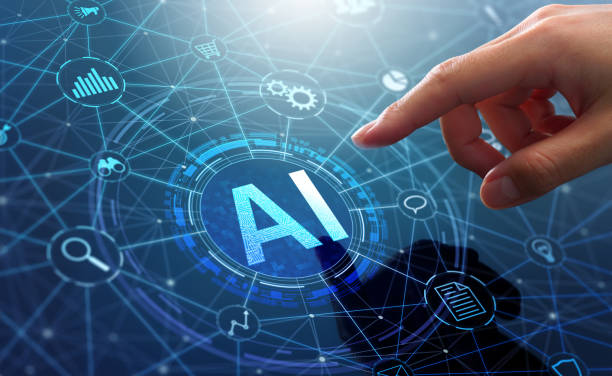What is an AI Robot: Definition and Basic Concepts

An AI robot, sometimes referred to as an #Intelligent_Agent, is a combination of robotics and artificial intelligence.
These robots are capable of performing tasks autonomously and with a level of intelligence that previously required human intervention.
#Artificial_Intelligence enables the robot to understand its environment, make decisions, and act through machine learning, natural language processing, and computer vision.
By utilizing complex algorithms, an AI robot can identify patterns, analyze data, and make informed decisions based on them.
These decisions can include navigation, choosing the best path, recognizing objects and people, and even performing more complex tasks such as negotiation and problem-solving.
In summary, an AI robot strives to create an autonomous and intelligent system that can operate independently in various conditions by simulating human cognitive abilities.
These robots can be employed in various industries, including manufacturing, healthcare, customer services, and education, thereby increasing efficiency and productivity.
The applications of #AI_Robots are extensive, and we witness new innovations in this field every day.
Common applications include service robots used in hotels and restaurants to guide customers and provide services.
Additionally, industrial robots used in production lines for repetitive and dangerous tasks are another example of AI robot applications.
In the healthcare sector, surgical and nursing robots can assist doctors and nurses in performing precise surgeries and caring for patients.
AI robots also have applications in education and can be used as private tutors and educational aids for students.
Overall, AI robots have the potential to improve our lives in many aspects and assist us with daily tasks.
Do you have an e-commerce website, but your sales aren’t as expected? RasaWeb solves your problem forever with professional e-commerce website design!
✅ Significant increase in conversion rates and sales
✅ Unparalleled user experience for your customers
⚡ Click here for a free consultation with RasaWeb!
Architecture of an Intelligent Robot and Its Main Components

The architecture of an intelligent robot typically includes several key components that work together to enable complex task execution.
The first and most important component is the sensors.
Sensors allow the robot to collect information from its surroundings.
This information can include images, sounds, temperature, pressure, and location.
There are various types of sensors, categorized by the type of information they collect.
For example, cameras are used for collecting images, microphones for sounds, and GPS for determining location.
The information collected by sensors is sent to the robot’s central processing unit.
The central processing unit, usually a computer or microcontroller, is responsible for analyzing the information received from the sensors and making decisions.
This unit processes the information using AI and machine learning algorithms and decides what action should be taken based on it.
For example, if the robot is moving and detects an obstacle, the central processing unit decides how the robot should navigate around the obstacle.
After a decision is made, the necessary commands are sent to the actuators.
Actuators are motors and other devices that enable the robot to move, manipulate objects, and perform other activities.
Upon receiving commands from the central processing unit, the actuators perform the desired action.
For example, if the robot needs to move to the right, the actuators activate the corresponding motors to make the robot move to the right.
In addition to these components, an intelligent robot typically also has a control system and a communication system.
The control system is responsible for monitoring the robot’s performance and ensuring it operates correctly.
The communication system allows the robot to interact with other devices and humans.
This communication can be established via wireless networks, Bluetooth, or other communication methods.
Ultimately, all these components together form an intelligent robot capable of performing complex tasks autonomously and with a level of intelligence.
AI robot technology is constantly developing and advancing, and it is expected that in the near future, we will see even more applications of it across various industries.
Review of Key Algorithms in AI Robots
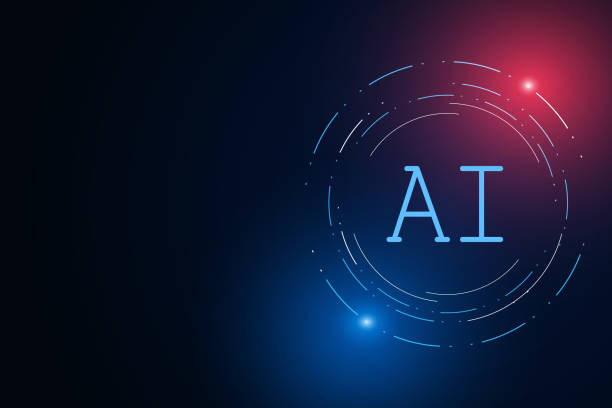
Key algorithms in AI robots play a crucial role in their performance and efficiency.
One of the most important of these algorithms is machine learning.
#Machine_Learning enables robots to learn from data and improve their performance without explicit programming.
Various types of machine learning algorithms exist, chosen based on the type of data and the tasks the robot needs to perform.
For example, supervised learning algorithms are used to train robots using labeled data, while unsupervised learning algorithms are employed to discover hidden patterns and structures in data.
By leveraging machine learning algorithms, an AI robot can make better decisions and improve its performance over time.
Natural Language Processing algorithms are another set of key algorithms in AI robots.
Natural Language Processing allows robots to understand human language and interact with it.
These algorithms include various techniques such as speech recognition, language translation, and sentiment analysis.
Using natural language processing algorithms, an AI robot can understand voice commands, answer questions, and even converse naturally and fluently with humans.
These capabilities enable AI robots to be used in various applications such as customer services, education, and entertainment.
Computer Vision algorithms also play an important role in AI robots.
Computer Vision enables robots to understand images and videos and extract useful information from them.
These algorithms include various techniques such as object detection, face recognition, and motion detection.
Using computer vision algorithms, an AI robot can understand its surroundings, detect objects and people, and track their movements.
These capabilities enable AI robots to be used in various applications such as autonomous driving, video surveillance, and quality inspection.
| Algorithm | Application | Description |
|---|---|---|
| Machine Learning | Performance Improvement | Learning from data without explicit programming |
| Natural Language Processing | Human Language Interaction | Understanding and responding to human language |
| Computer Vision | Image Understanding | Object and environment detection |
Applications of AI Robots in Industry and Manufacturing

The applications of AI robots in industry and manufacturing are very broad and diverse, and are continuously increasing.
One of the most important applications is the automation of production processes.
AI robots can perform repetitive and tedious tasks with high precision and speed, which leads to increased productivity and reduced costs.
For example, welding, painting, and packaging robots can perform these tasks automatically without human intervention.
An AI robot on production lines can work continuously without fatigue, which improves product quality and reduces human errors.
Quality inspection is another important application of AI robots in industry and manufacturing.
Robots equipped with high-precision cameras and computer vision algorithms can meticulously inspect products and detect defects and flaws.
This ensures that high-quality products reach customers and prevents potential problems and damages.
An AI robot in the quality inspection process can operate continuously and flawlessly, which improves product quality and reduces inspection-related costs.
Furthermore, AI robots can play a significant role in supply chain management.
These robots can analyze data related to demand, inventory, and delivery times to make optimal decisions regarding ordering, warehousing, and transportation.
This leads to a more efficient management of the supply chain and reduced costs.
An AI robot in supply chain management can operate autonomously and intelligently, which improves efficiency and reduces costs.
Overall, AI robots have the potential to completely revolutionize industry and manufacturing and help companies become more competitive and profitable.
Do you dream of a thriving online store but don’t know where to start?
RasaWeb is your comprehensive e-commerce website design solution.
✅ Attractive and user-friendly design
✅ Increased sales and revenue⚡ Get Free Consultation
The Role of Intelligent Robots in Future Healthcare

The role of intelligent robots in future healthcare is highly significant and can bring about remarkable transformations in this field.
One of the most important applications is robotic surgery.
Surgical robots can perform operations with high precision and delicacy, which leads to reduced pain and bleeding, shorter recovery times, and an increased likelihood of successful outcomes.
An AI robot in surgery can assist surgeons in performing complex operations with greater accuracy and preventing side effects.
Nursing robots can also play an important role in patient care.
These robots can assist patients with daily tasks such as eating, dressing, and moving.
Furthermore, nursing robots can continuously monitor patients’ vital signs and, in case of any issues, notify nurses.
An AI robot in patient care can help nurses allocate more time to higher-need patients and improve the quality of care.
Moreover, AI robots can play a significant role in disease diagnosis.
These robots can assist doctors in diagnosing diseases by analyzing patients’ medical data such as radiology images, blood tests, and medical histories.
An AI robot in disease diagnosis can help doctors detect diseases in their early stages and provide more effective treatments.
Furthermore, AI robots can also play an important role in developing new drugs.
These robots can assist scientists in identifying drug targets and designing new medications by analyzing genetic and chemical data.
Overall, AI robots have the potential to completely revolutionize healthcare and contribute to improving the quality of human life.
By continuously learning from new data, an AI robot can constantly improve its performance and assist doctors and nurses in providing better services.
Ethical and Legal Challenges of Using Intelligent Robots
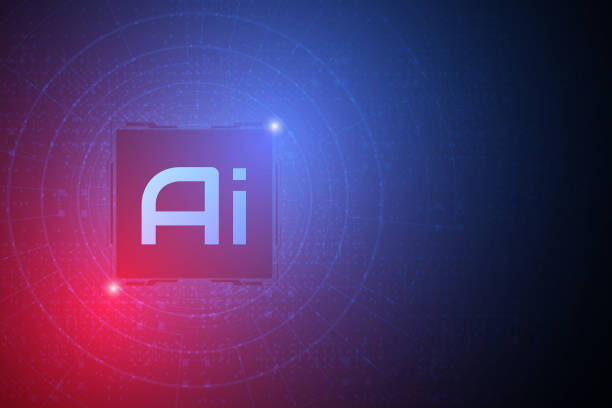
The use of intelligent robots, while offering numerous benefits, also presents several ethical and legal challenges.
One of the most significant of these challenges is accountability.
If an intelligent robot causes damage or harm, who will be held responsible? The robot’s manufacturer, its owner, or the robot itself? These questions require careful consideration and the establishment of clear laws.
An AI robot cannot be held accountable like humans in case of error, which complicates the issue of responsibility.
Privacy is another significant challenge.
Intelligent robots typically collect a lot of user data, such as personal information, financial data, and health-related information.
How can this information be protected and its misuse prevented? These questions necessitate the drafting of strict laws and regulations regarding privacy protection.
By collecting and processing data, an AI robot can access sensitive information that requires serious protection.
Furthermore, the issue of bias can also be a serious challenge.
If the AI algorithms used in robots are biased, the robots might make unfair and discriminatory decisions.
For example, a recruitment robot might unconsciously reject certain individuals due to their gender, race, or religion.
To prevent this problem, AI algorithms must be carefully reviewed to ensure their fairness.
An AI robot should be designed to prevent any form of discrimination and make fair decisions.
Additionally, there are concerns about job displacement.
With the increasing use of robots in various industries, many individuals may lose their jobs.
To address this issue, training and empowerment programs should be developed to help people acquire new skills and adapt to changes in the job market.
An AI robot can replace some jobs, but efforts must be made to manage these changes in a way that minimizes harm to individuals.
The Future of AI Robots and Their Impact on Societies
![]()
The future of AI robots is very bright and full of potential.
It is expected that in the near future, we will see a wider adoption of robots in various industries and daily life.
Intelligent robots can assist humans with repetitive and dangerous tasks, increase productivity, and improve the quality of life.
By continuously learning and improving its performance, an AI robot can play a significant role in the development of societies.
One of the most important impacts of AI robots on societies is the change in the job market.
With the increasing use of robots, some traditional jobs may disappear, but at the same time, new jobs will also be created.
For example, jobs related to designing, manufacturing, maintaining, and programming robots.
To adapt to these changes, individuals must be prepared to learn new skills and enter these professions.
An AI robot can replace some jobs, but efforts must be made to manage these changes in a way that minimizes harm to individuals.
Furthermore, AI robots can play a significant role in solving social problems.
For example, robots can assist in providing services to people with disabilities and the elderly, reducing traffic, improving the environment, and combating crime.
By utilizing advanced data and algorithms, an AI robot can contribute to better decision-making in various fields and improve the quality of human life.
Overall, AI robots have the potential to completely revolutionize societies and help create a better and more equitable world.
By continuously learning and improving its performance, an AI robot can play a significant role in the development of societies and help solve social problems.
| Area | Potential Impacts |
|---|---|
| Job Market | Creation of new jobs, changes in required skills |
| Healthcare | Improved surgical precision, elder care |
| Transportation | Autonomous driving, traffic reduction |
| Customer Services | Faster and more efficient responses |
An Overview of AI Robots in Iran: Opportunities and Challenges
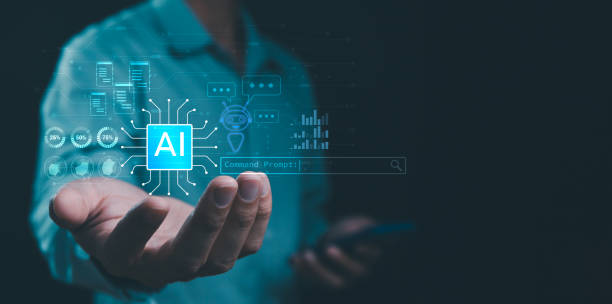
In Iran, as in other countries worldwide, AI robots have high potential for development and progress.
Given the human talent and scientific capacities available in the country, it can be expected that Iran will achieve a suitable position in the field of robotics and artificial intelligence.
AI robots in Iran can have numerous applications in various industries such as oil and gas, agriculture, automotive, and healthcare.
One of the most important opportunities in Iran is the presence of a young and educated workforce.
By investing in the education and training of specialists in robotics and artificial intelligence, this workforce can be transformed into a competitive advantage.
Furthermore, supporting knowledge-based companies and startups in this field can contribute to the development of indigenous technologies and the creation of added value.
By developing indigenous technologies, an AI robot can help the country achieve independence and self-sufficiency in various fields.
However, there are also challenges along this path.
One of the most important challenges is the lack of investment in research and development.
To compete with leading countries in this field, more investment in research and development is needed.
Additionally, appropriate laws and regulations must be formulated to support the development of robotics and artificial intelligence.
An AI robot requires governmental and private support to fully develop within the country and contribute to value creation.
Overall, with its human talents and scientific capacities, Iran has high potential for the development of AI robots.
With proper planning and adequate investment, this potential can be actualized, and its benefits can be harnessed in various fields.
An AI robot can contribute to the economic and social development of the country and lead to an improvement in people’s quality of life.
Did you know that a weak corporate website costs you many opportunities daily? Solve this problem forever with professional corporate website design by RasaWeb!
✅ Create a powerful and reliable image for your brand
✅ Attract new customers purposefully and increase sales
⚡ [Get free website design consultation]
Guide to Buying and Choosing the Right Intelligent Robot
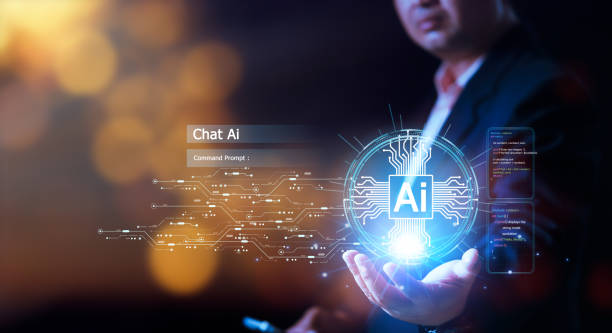
Buying and choosing the right intelligent robot requires careful consideration and attention to your needs and expectations.
First and foremost, you must specify what task you intend to use the robot for.
Are you looking for a service robot to assist with household chores? Or an industrial robot for manufacturing tasks? By identifying your needs, you can narrow down the available options and make a better choice.
An AI robot for different applications has distinct features and capabilities that must be considered.
Next, you should pay attention to the robot’s technical specifications and capabilities.
What type of sensors does it have? What kind of AI algorithms are used in it? How much processing power does it possess? What is its battery capacity? By examining these features, you can ensure that the robot is capable of performing your desired tasks.
An AI robot with suitable technical features can perform its tasks more efficiently and meet your needs.
Furthermore, you should consider the robot’s price.
Robot prices vary depending on their features and capabilities.
Before purchasing, you should determine your budget and choose a robot that aligns with it.
You should also consider the maintenance and repair costs of the robot.
An AI robot with a reasonable price and low maintenance costs can be an economical choice.
Finally, before buying, always read other user reviews and ratings.
These reviews can assist you in selecting a suitable intelligent robot.
An AI robot with positive user reviews can be a reliable choice.
Advanced Concepts in Robotics and AI Robots

In the world of robotics and AI robots, advanced concepts exist whose understanding is essential for the development and improvement of robot performance.
One such concept is reinforcement learning.
#Reinforcement_Learning allows robots to learn through trial and error and find optimal strategies for performing their tasks.
In this method, the robot receives a reward or punishment for performing an action, and based on that, it learns how to improve its actions.
By using reinforcement learning, an AI robot can automatically discover optimal strategies for performing complex tasks.
Another advanced concept is soft robotics.
Soft robotics refers to the design and construction of robots made from flexible and deformable materials.
These robots can easily adapt to their surroundings and perform tasks that rigid robots are unable to.
An AI robot in soft robotics can help robots interact more intelligently with their environment.
Furthermore, the concept of swarm intelligence has also gained attention in robotics.
Swarm intelligence refers to the collective behavior of decentralized and self-organizing systems.
In this method, a collection of simple robots can perform complex tasks by collaborating with each other.
An AI robot in swarm intelligence can help robots cooperate more cohesively and efficiently.
Overall, advanced concepts in robotics and AI robots have the potential to make robots smarter, more flexible, and more efficient, and to help solve complex problems in various fields.
By utilizing these concepts, an AI robot can continuously improve its performance and respond to the needs of societies.
Frequently Asked Questions
| Question | Answer |
|---|---|
| What is an AI robot? | An Artificial Intelligence Robot (AI Robot) is a machine capable of understanding its environment, reasoning, learning, and making decisions to perform tasks independently. |
| What is the difference between ordinary robots and AI robots? | Ordinary robots perform repetitive tasks based on prior programming, whereas AI robots can learn from experience, interact dynamically with their environment, and even behave in ways that resemble human intelligence. |
| What are the main applications of AI robots? | They are used in industries (manufacturing, assembly), medicine (surgery, diagnosis), services (customer support, domestic), exploration (space, underwater), and many other fields. |
| What technologies are used in the construction of AI robots? | Machine Learning, Computer Vision, Natural Language Processing, Deep Learning, and Robotics are among the key technologies. |
| Can AI robots have emotions? | Currently, robots do not possess emotions in the human sense. They can identify and react to emotions, but they do not experience emotions themselves. |
| What are the main challenges in the development of AI robots? | Safety, reliability, ethics, autonomy, adaptability to complex environments, and natural human interaction are among the important challenges. |
| How are AI robots trained? | They are typically trained using large volumes of data, machine learning algorithms, and deep learning to identify patterns and make decisions. |
| Examples of AI robots in daily life? | Smart robotic vacuum cleaners, customer support chatbots, self-driving cars, and surgical robots in hospitals. |
| Are AI robots a threat to human jobs? | Some repetitive jobs may become automated, but simultaneously, robots can increase productivity and create new jobs in the development, maintenance, and oversight of these systems. |
| How is the future of AI robots predicted? | They are expected to become smarter, more autonomous, and capable of performing more complex tasks, engaging in closer interaction with humans in various environments. |
And other advertising services by RasaWeb Advertising Agency:
- Smart Reportage: An effective tool for campaign management with SEO-driven content strategy.
- Smart Advertising Campaign: A novel service to increase website traffic by optimizing key pages.
- Smart Custom Software: Revolutionize customer behavior analysis with the help of Google Ads management.
- Smart Custom Software: A fast and efficient solution to increase click-through rates by focusing on using real data.
- Smart Website Development: Designed for businesses looking to improve their SEO ranking by using real data.
And over hundreds of other services in internet advertising, advertising consultation, and organizational solutions.
Internet Advertising | Advertising Strategy | Advertorial
Sources
What is Artificial Intelligence? A Comprehensive Guide
Applications of Artificial Intelligence in Everyday Life
Intelligent Robots: The Future of Technology
The Impact of Artificial Intelligence on Various Industries
? Are you ready to boost your business in the digital world? Rasaweb Afarin Digital Marketing Agency, specializing in e-commerce website design, SEO, and advertising campaign management, is your reliable partner for reaching the pinnacles of online success. With a strategic and innovative approach, we will create a powerful and profitable online presence for you.
📍 Tehran, Mirdamad Street, next to Bank Markazi, Kazerun Jonoubi Alley, Ramin Alley, No. 6

